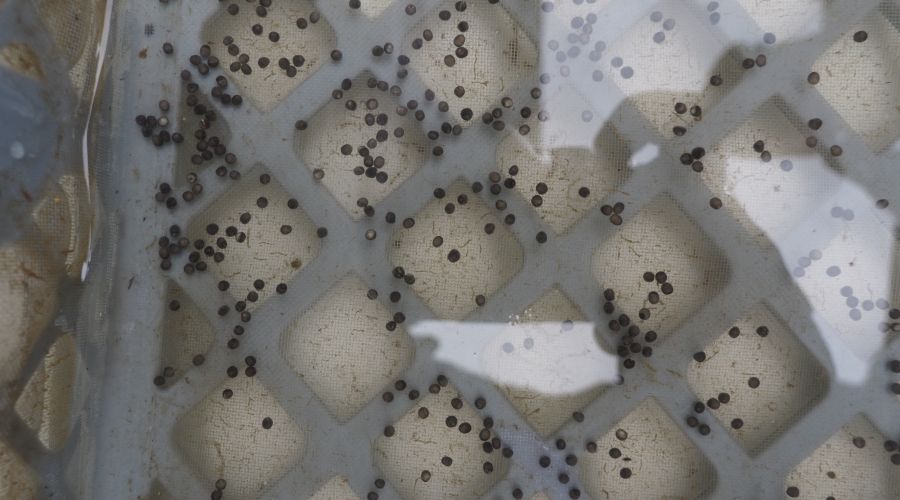Sturgeon babies know they are at home in the Danube

Sturgeons are prehistoric fishes without scales, looking at first glance like toothless freshwater sharks. On Earth, sturgeons evolved long before the dinosaurs, but unlike them, they survived until today. Yet. They don't have it easy with us humans at all. We have made it impossible for them to migrate by building dams and other water constructions, we have destroyed their places for feeding and breeding, we are releasing many harmful substances into the water, and we have almost exterminated them by poaching. Sad fact, isn't it?
Nevertheless, the sturgeons do not give up, and we members of the LIFE Living Rivers project team (101069837/LIFE21-IPE-SK-Living Rivers) do not give up either and decided to help the sturgeons in the Danube. Thus, one of the goals of this project became the strengthening of sterlet (Acipenser ruthenus) populations in the Slovakian-Hungarian section of the Danube by means of close-to-nature egg incubation methods. In April 2024, more than 20,000 sterlet eggs were fertilized and incubated using innovative approaches at two locations - in the Outflow channel of the Gabčíkovo waterworks and in the riverbed of the Old Danube. The incubators with the eggs were placed directly in the stream, i.e. the sturgeon larvae could taste and encode the smell of their "home" water in their heads immediately after birth (hatching). However, the sturgeon larvae did not stay at home. As true river wanderers, the "sturgeon newborns" escaped into the world immediately after leaving the eggs, or rather they were freely drifted by the river stream for several days, thus traveling tens to hundreds of km from their birthplace before finding their place where they decided to grow up. However, unlike their friends, who are deployed to the Danube as preschool children (a few months old juveniles) or even as teenagers (one-year-old fish), they know where they were born and where they are at home. So, if we are a little patient and the “newborn sturgeons" are a little bit lucky, then in a few years later they will return and give birth to their babies at the same place where they were born - so they will return to reproduce at home, in the place of their "birth".
The project partner, which is responsible for the activity – the University of South Bohemia in České Budějovice, Faculty of Fisheries and Water Protection (FFPW USB), will continue in this activity for the next few years of the project. The goal of the activity is, in addition to strengthening of abundancy of sturgeon populations in the Danube, also an effort to develop and adapt to the conditions of the Slovak part of the Danube an uncomplicated method of incubating sturgeon eggs, which will be easily transferable to fishing practice, and will thus be able to be used by institutions that will deal with strengthening of sturgeon stocks in the future and their management in the Danube basin.



